Bucharest to Budapest to Ljubljana
28 December 2019 – 1 January 2020

In which your correspondent is “going the wrong way” to start a journey south west towards Bulgaria and Greece. The air fare was $800 cheaper if the journey commenced in Bucharest.... The 750 page Balkan History book to accompany the journey may not be all read before the end of trip... And Prince Charles may be the Queen’s Husband if Kathmandu is an antipodean cult, and your humble correspondent takes the Pledge.
__________________________________________________________________________________
“The decision to convene a conference in Berlin to solve the Great Eastern Crisis confirmed the city’s precocious status.... Bismarck made no secret of the fact that he wanted the Congress to complete its work as soon as possible, The whole business had forced him to postpone his annual convalescence at his favourite spa resort, and the intense heat of Berlin aggravated his shingles. By his own admission, the only way he was able to keep the pain at bay was to prepare for every session of the Congress by downing a jug of port. This is reported to have exacerbated his quick temper...”
- Misha Glenn: “The Balkans 1804 - 2012. Nationalism, War and the Great Powers”
__________________________________________________________________________
The Treaty of Berlin was signed on 13 July 1878. In the aftermath of the Russian victory against the Ottoman Empire in the Russo-Turkish War of 1877–1878, the major powers restructured the map of the Balkan region to suit their own political and aspirational purposes.
Again. (And Again and Again through from the 19th to 21st Century).
The fading Ottoman Empire to the East; Orthodox Christianity and Pan-Slavism from the north and Roman Catholicism to the east... all “meet” in the Balkans.... although the Ottomans had managed the area by respecting all religions, ensuring they were living in separate communities, although Islamic communities had lower taxes as they were conscripted into the army.
The shadows of divisive “Great Power” history stalk any visitor to this part of the world.
__________________________________________________________________________________
Frankfurt Airport, 5am:
Publicly scolded (after 18 hours and two flights and a bloody long and circuitous walk through the greyest and coldest of airports to something called Termnal B, after being wrongly directed to something called Terminal Z), by an officious German security “uniform” for having my liquids in the “wrong kind of clear bag”. I was so loving that he enjoyed his job and supplied a free clear bag at this hour of the ?morning. DW TV was showing extended coverage of the Australian fires in the “relaxation” lounge. I neither relaxed nor lounged for the next 4 hours....
__________________________________________________________________________________

Bucharest Airport, 2.15pm:
The Romanian government added a new section to the very basic international terminal at the airport a few years ago, but apparently not to the actual tarmac needed to bring a jet to the gate. “We need to wait in turn to be towed in,” says the slightly satirical Lufthansa pilot. The crew of the Romanian Tarom jet behind us in the queue probably takes this a little more routinely...
A darkly ironic day of wandering Bucharest: from crumbling Soviet-era metro stops, memorials for the 20th Anniversary of the anti-Communist revolution and summary execution of the toxic Ceaucescus... large sculpted caricatures of ongoing Romanian political/corrupt types now interact outside of the National Theatre in University Square where many protests continue as the continuing, corrupt political families still cling to democratic power.
Our guide, Irena, led three of us on a sedate walking tour of pre-Communist Bucharest, well hidden behind monstrous and crumbling identikit Communist apartments which line the main streets of the city “designed so a conversation in a ground floor kitchen can be overheard in a 4th floor bedroom”.
The most beautiful Armenian, Ottoman, Art Nouveau and religious buildings that remain are in the twisting Ottoman-era laneways behind the bland concrete-cancer Ceaucescu-era facades, many mimicking French 19th Century art nouveau styles, mixed in with remaining Ottoman houses, towering over streets with defensive inner courtyards. The Art Nouveau former American Embassy faces, across a narrow street, a vast Art Deco arts centre building which was the former Soviet Embassy. Some buildings are impressively restored; about a quarter are in states of dereliction. “See that mark: The Communist Government confiscated those houses from the previous owners and there is legal disagreement about who owns them now. If you are a Jewish family trying to reclaim your property in Romania, you may find that after it was inhabited by a range of families granted access by the Nazis or collaborators during World War II”. The Ceaucescus had then purloined it as government property, after the war and “election” of the Communist Party, for chosen families (or stables, or warehouses, or government operations) so you have a three-level legal thicket to negotiate to “prove” ownership. Central Bucharest is littered with derelict houses grabbed by the government(s), and suitably labelled, that are now just crumbling... It’s not a dull city history, and so much remains unresolved.
(Above: 1: FrenchArt Nouveau and Ottoman style housing, 2-3: Former Secret Police Facility, 4-5: Armenian Church, 6-8: Orthodox cathedral moved 200 metres (privately funded) to make way for new Ceaucescu apartment buildings, 9: Abandoned Art Nouveau Mansion.)
We were taken to a rather grand art nouveau residence, now an up-market cafe for samples of traditional finger foods and mulled wine. The towering corner ceramic heater was comforting. “I do hope you are enjoying the atmosphere,” says Irina, “because this used to be a secret police interrogation centre....”
Once let loose from our meat sampling at the Obor Outdoor Markets, surrounded on all sides by identikit-bland seven or eight storey apartment complexes differentiated only by occasional squares of different coloured paint, “enhancing” a massive roundabout with rusting curved blue steel tram/metro shelters that didn’t, (temperature a bracing minus one). I entered the semi-darkness of the metro. The Communist-era lighting may still be present, but only about a quarter of fluorescent tubes are lit and many escalators seem to be merely decorative. At least the trains are bright, shiny and new, until you transfer to the northern line where even the spare plastic bucket seats and windows are graffiti covered. Emerging into a windswept square, nothing looks like the map as trams have been cut back... but wandering back southwards finds services to the colossally hideous Stalinist building on the northern edge of the city.
Romania’s history seems to be that they kept “choosing” the less advantageous allies in various wars (France for World War 1 when surrounded by German allies???) and therefore losing big chunks of land to neighbouring nations, until Stalin “saved” their borders after WWII, and then gifted them the hideous architecture, and a fair bit of Transylvania from back Hungary.
This Soviet architectural “gift from the friendly peoples of the Soviet Union” (imposed by most eastern bloc capitals in the 1950’s) is now the Press Freedom Centre. It’s adjacent neighbour is a glossy new Microsoft building. One tram stop further south is Romania’s Arc de Triomphe, of course.... all part of Romanian governments’ historically looking towards France as a means of extricating Romania from the extreme corruption of the Ottoman Empire to become a “western” European nation. The new nation even ran some kind of merit selection process to find a “Roman” royal family head of state (preferably about 6th in line so keen to take on a new country): a bit like Australia used to do in selecting a Governor General? Because they (wisely) selected a German, the European Great Powers left them somewhat more to their own devices than was expected, or risk the wrath of the Kaiser.
There are massive Christmas illuminations along several kilometres of boulevard south of the arch, which suggests where the metro’s lighting budget may have gone....
——————————————————————————---------------------------------------------
Bucharest Gara Nord station: (yes, more faux-French, and gone badly to seed): the local sex workers have been forced out of the building by “SECURITY” to the scrappy, dark park behind the Airport Express bus stop: Welcome to Bucharest!
Webjet recommended and booked me into the adjacent Andy Hotel “matrimonial standard” suite. The free city map was sponsored by gambling and sex industry interests, suggesting why the bed felt so well-used. The weary look of the Reception girl said all you needed to know about the hotel’s usual clients. Being low season, it was two businessmen, one old married couple and one self at the tiny breakfast buffet.

So, it’s 4.50am (largely irrelevant in a jet lagged state) and my “international express” train to Budapest leaves at 5.10am (15 hours, second class only, no catering: at least it’s better than the 1940’s Stalin-era coal heated carriages making up the grimy blue train seen trundling in from Moldavia (above): with dusty passengers to match) and Macdonalds is all there is at this hour for breakfast. The decoration is a massive, garish, plastic Wendy House interior... just a little dazzling at this hour....
So, I’m waiting in the Maccas queue: the old bloke in front of me (lack of sleep; lack of soap) is in a well-slept grey overcoat, cotton wool in both ears, and trying the stoic young server by never quite coming to a decision about his order... several times... as the clock ticks away for my train departure. The pert young server (waaaaaay too bright and energetic at this hour of the morning) tolerated all of this well (I didn’t), until her more aged, aggressive, well-upholstered superviser arrived, confirmed the order he WILL have: one “placinta” and two cans of Tuborg.... allowing me a rushed serve and run to the train of second-hand French carriages (with no helpful car numbers and the only “help” being an alleged charity collector who could be bribed to assist). I outpaced him to the front car which had: number, comfortable seat, elegantly attired and somewhat voluptuous conductor, rakishly red and blue hatted, and super-efficient all the way to the Hungarian border. She helped to mop up the spilt Maccas coffee.
Between sleeps I vaguely remember lots of ploughed fields, looking across the broad Danube into Serbia (with a massive national crest carved/painted onto the opposite bank), the Ploesti oil fields (the main reason for the Nazi invasion to secure a reliable oil source... they had already ensured that most Balkan countries had changed the nature of their crops to ensure Germany received 60% of agricultural exports in the late 1930’s and a reliable ongoing source from 1939, helpfully assisted by invasion)... and growing numbers and sizes of silos and broad, flat fields as we approached the Hungarian border. By now the train had shed the various unnumbered carriages down to two, with numbers. Most passengers had wisely detrained at Timosoara and the dozen or so remaining did the land-border-train-dance.
There’s the dead silence of a still train, while uniformed officialdom slouches along the tracks, climbing on to do the Romanian immigration exit-and-stamp thing. I won the only bag search. It ended when I willingly dragged the bag from the rack and unlocked, it, only to be told not to worry. Ten minutes of slow trundle into Hungary and another long pause. The only sign of a border is that the power poles change colour and the track becomes single. This was far more searching (of the actual train) and officious. One Immigration officer even carried a cute little red stepladder so he could climb and peer behind panels and into the ventilation system while a colleague poked around for potential refugees under the carriage. A quick check of the at-seat bins and we were stamped and sent on through the twilight to Budapest.
__________________________________________________________________________________

New Year’s Eve in Budapest: brilliantly sunny for river walks and excursions to museums “closed for winter” and on the Santa Tram down the east bank of the Danube before the early cruise to ooh and aah at the bridge, parliament, and Pest building illuminations, fuelled by free mulled vino... and an early night after a Turkish fast-foodery meal.
I stayed in “Wonderful Apartment” in Budapest: no working wifi or instructions, a TV that had been completely untuned by a previous “guest”, and a security code that was straightforward in bright sunlight (to retrieve the key), but 7pm was pitch-black. A helpful neighbour in the elegant Hapsburg era building rustled up a torch and slapped the security box until it spat out a key. I received a HUGE hug the following afternoon after I’d composed a Google Translate thank you card, using bloody Star#ucks wifi over breakfast, and left it at her door. So: a happy new year....
__________________________________________________________________________________
Budapest to Slovenia:
International Rail in Melbourne had declined to book me on the direct train to Ljubljana (2nd class: no catering for 10 hours... this seems to the Balkan “normal” as the quality, speed, cleanliness and heating of trains slowly, grubbily declined when I started to travel east). I was booked on a 7am “RailJet” into Austria with an hour between trains at Salzburg. “After that, you’re on your own, but there WILL be trains,” said my helpful Melbourne agent...
The young bloke booked in the adjacent seat received a kind of “buttoned up”, Germanic, farewell from elderly father and mother, ending with formal handshakes before they left the train at Budapest. Young Guy was a talker... all the way from the Austrian border to Salzburg and it was fun: his family is German but working for some multinational company in Hungary. He wanted to study biology against his father’s wishes (“Physics! Engineering!”) and Hungarian universities offered little, so he enrolled in Heidelberg.
He’d helped to organise a life-affirmation school student demonstration at Auschwitz during his last year at school, and was now concerned that the increasingly right-wing government of Hungary was buying up any competing media to limit political debate. They are also rewriting school history texts to reflect their view of the world with “simplistic nationalist nonsense”. There has been a “brain drain” from Hungarian schools as older teachers retire and there is a struggle to find quality replacements. Teachers are paid less than bus drivers and class sizes are growing and discipline is in decline. Teaching is now mostly by rote.
The conversation continued: “So, Prince Charles: he’s the queen’s husband?” Much sharing of photos of interesting architecture before he asked about how retirement worked in Australia: “My grandmother lived in a village in the north of Hungary and farmed a strip of land several miles out of town. At the age of 70 she had to sell her house as she could no longer plough the field unassisted.” The Budapest that tourists don’t see is where he lives: high rise apartments on the outskirts with few services, not many buses, and a long commute to school. Most apartments aren’t selling so it’s a quiet existence.
In amongst all of this he was doing the super-polite young passenger thing, lifting bags to/from racks for women and the elderly and talking... talking...
Where he will live in Germany he has no internet because the building manager has to approve the connection, and keeps avoiding his calls. As most of his baggage consisted of a guitar, I was hoping a few more survival skills or support might be in place. He was unfazed, apart from potentally losing the internet...
In the Salzburg station bakery he asked if “Kathmandu” was some kind of Australian cult. The family, all in Kathmandu gear at the adjacent table assured him that it was. They were returning home early to the Sunshine Coast because of the fires.
Salzburg to Ljubljana:
Four hours through the Austrian Alps on a Euro City train that became shorter and emptier (and snowier) as we shed catering and carriages at Villach before crossing into the former Yugoslavia. The guard came through at Spittal to make sure we were actually intending to go to Slovenia and Croatia. It was two second class carriages only into Slovenia, and too dark to see much apart from the lights of Split on the way...
Ljubljana:
A city which has been colonised by a variety of European powers (including being ringed by barbed wire as a ghetto by the Italian army early in World War II, only to face far worse under the Nazis...) then, initially under Tito as he pre-emptively removed any perceived threats (lets’ call it “sanctioned murder”) to the establishment of his Yugoslavia - centred on Belgrade and largely to the advantage of Serbia. The city has never forgiven Italy, supported by the great powers, for depriving them of access to their own sea port (so a large anchor is a memorial in the central park).

With less than 24 hours here, I’d booked a walking tour with the gorgeous Lidija. I was the only booking so, after a bit of “getting to know you” around the Anchor Memorial, she set off to show me what might be of interest (a mutual enthusiasm for Communist history and architecture helped... as did regular, warming coffee stops in the fog).
The city was saved from the threatened wholesale demolition of historical buildings to create bland concrete Socialist apartments by local architect Plecnik In Sveto, and his students. The government sent experts to study Scandinavian post-war planning rather than the Soviet model. Most new inner city building harmonised with historical structures, except the usual hideous Eastern European 1970’s brutalist square just outside of the parliament, where Communist era memorials have been largely maintained. As the city is at the intersection of several Roman roads, various sites are preserved, and gravel stone patterns on city pavements reflect what is beneath.
Former religious buildings (taken by the state) were positively repurposed into public buildings such as the Arts Centre. The majority of inner city buildings are Hapsburg era reflecting Austrian imperial prosperity and power, centred around a fine medieval hilltop fort (now a huge money grasping exercise for the city from an expensive funicular railway to privatised cafes, restaurants and museums (with the inner city views have to be paid for...), as well as remnant Roman walls and roads. Politically, “the old left have become the new right”, and are modelling themselves on Victor Orban, the Prime Minister in Hungary”. School books are being rewritten to reflect a more nationalist view of history....
Life under Tito (who died in Ljubljana) was all centralised through Belgrade: “Even in my job of computer technology, in order to trade across the local border with Austria, we had to get written permission from Belgrade, then all trading had to be through Belgrade. We were one nation back then, but the Serbs got the money and the power, BUT, we were all in employment, health was free, education was free and good... My company was in technology and ahead of the game, but was sold off to Americans on our independence. Guiding is my retirement job: I love it!!”
It was all a brilliant introduction to an afternoon in the local history museum which focused on the importance of anti-Nazi partisans (who became the propaganda “reason” for the Communist Party succeeding in taking power, if you disregard the hundreds of politically targeted murders and disappearances of inconvenient potential opposition types...). For some reason, specific local history seemed to come to an end with Tito’s death... apart from some glossy displays promoting Slovenian recent achievements and an exhibition honouring the official photographer who covered much of Tito’s career.
At the end of my city wandering, over coffee in the rather grand City Library, I Took The Pledge.
Ms Lidija (in her rakish blue cap and official red scarf) joined me up as an honorary Young Pioneer (a kind of Communist Scouts and Guides), with a lot more propaganda (actually.... maybe not...) and “Voluntary Labour for the nation”.
You too can earn this privilege.
Just repeat after me:
“PIONEER PLEDGE
Today, as I become a Pioneer
I give my Pioneer’s word of honour:
That I shall study and work diligently
And be a good comrade/friend;
That I shall love our homeland,
Self-managed socialist
Republic of Yugoslavia;
That I shall spread brotherhood and unity
And the principles for which
comrade Tito fought;
And that I shall respect all peoples of the
World who value freedom and peace”
By such means (apart from threats, intimidation, sudden freedoms and occasional openness equally suddenly withdrawn, an effective secret police force, ethnic/religious divide-and-rule and a foreign policy independent of the Soviet Union) did Marshall Tito hold Yugoslavia together as an apparently unified nation.
And we in the West were encouraged to see him as the “Good Communist”.
I left on the evening train to Zagreb.... the one I had arrived on last night... now apparently called the “Mimara”, but really just two well-heated second class carriages from Austria.
------------------------------------------------------------------------------------------------------------------------
For a previous post about Bucharest (and Sarajevo), go to:
For a previous post about Budapest (and Charleroi, Dresden; Plzen), go to:







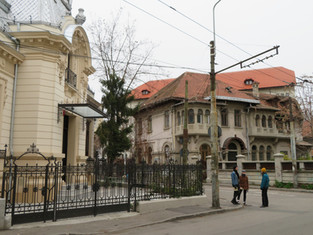





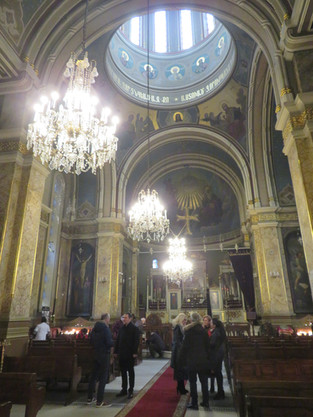



























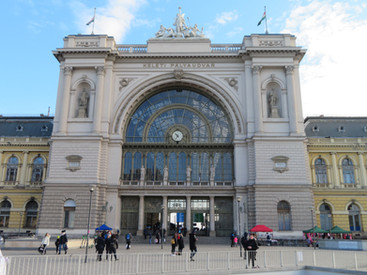




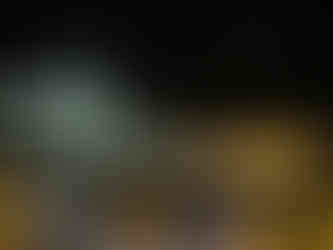
























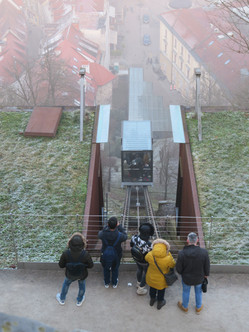












Comments